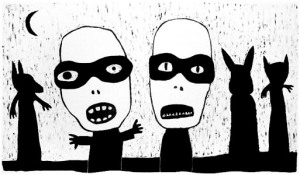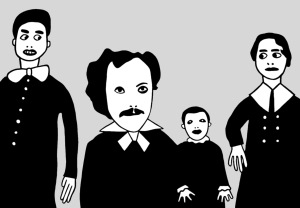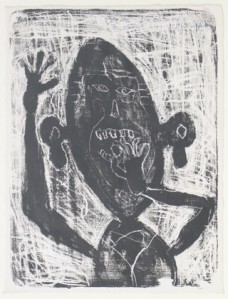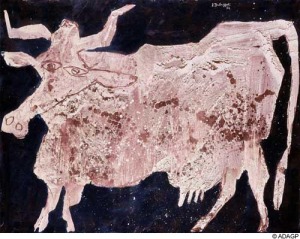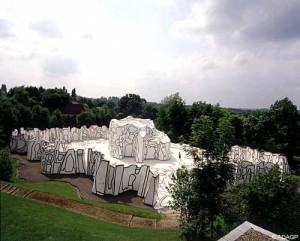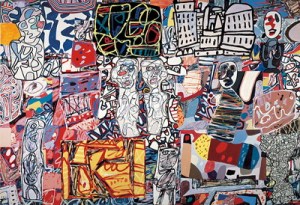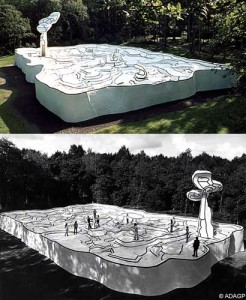Strange soirées
Posted: 18 March 2012 Filed under: Artists, Inspiration, Rona | Tags: art, artists, Bela Lugosi, Diane Arbus, Dutch Golden Age, Frans Hals, inspiration, Jean Dubuffet, Jim Henson, Muppets, poppets, prints, Rembrandt, Rona Green, Thomas de Keyser, Vincent Price 5 Comments
‘For me the subject of a picture is always more important than the picture. And more complicated.’
– Diane Arbus (1923-1971)
All kinds of images fire up my imagination.
One photo in particular has intrigued me so much that I have created three different interpretations – it is a snapshot of my guy’s birthday party, illustrated above.
The first incarnation, party, was highly influenced by my love of Jean Dubuffet’s art.
Then there was Birthday Boogies, a mixed media piece including soft sculptural objects that I call poppets.
The poppets were born from a fondness for dolls, puppets and masks. As a kid I adored The Muppet Show produced by Jim Henson, and the colourful characters of Warner Brothers and Hanna Barbera cartoons.
After Birthday Boogies came Secret Robot Society, which incorporated my fancy of the Dutch Golden Age of painting.
Favourite artists from this period in art include Rembrandt, Frans Hals and Thomas de Keyser.
After making Secret Robot Society I produced two more prints – Treacherous Boys With Charisma and The Ventriloquist – to form a trio of group portraits.
My creative process is very much about collaging together an eclectic range of source material to invent something otherworldly and somewhat absurd.
In the case of these prints I have referenced the Dutch painters along with TV shows, horror movie stars, dolls and puppets, as well as ideas about social hierarchy and esotericism.
And finally I should make mention of the beloved Women’s Weekly Children’s Birthday Cake Book!
PS: From now on I will be posting every Tuesday – until then, have a good week!
Who do you love?
Posted: 26 February 2012 Filed under: Artists, Rona | Tags: Adolf Wolfli, art, artist, Hans Prinzhorn, inspiration, Jean Dubuffet, Rona Green 12 Comments
‘For a very long time I was too humble […] and lacking in confidence and composure; and I suffered cruelly because of this, appearing in my own eyes to be nothing more than the most abject dog turd. It was only at a late stage – when in the end I had resigned myself to living like a dog turd without shame or regret and making the best of the situation – that it dawned on me that everyone else was also a dog turd.’
I love Jean Dubuffet.
While studying at university, one afternoon in the library when flipping through books in the art section, I turned a page and saw a reproduction of Man Eating a Small Stone by Dubuffet.
It turned my world upside down.
Early in his life, Dubuffet was influenced by the German psychiatrist and art historian Hans Prinzhorn, and his book Bildnerei der Geisteskranken (Artistry of the Mentally Ill) published in 1922.
Dubuffet collected an enormous amount of work by psychiatric patients, prisoners and children. He invented the term Art Brut (raw art) for the work produced by these non-professional artists. The collection is now housed at the Musée de l’Art Brut in Lausanne, Switzerland.
Dubuffet once declared ‘For me, insanity is super sanity. The normal is psychotic. Normal means lack of imagination, lack of creativity.’
One of my most ecstatic art moments was visiting the Kröller-Müller Museum when in the Netherlands and encountering Dubuffet’s Jardin d’émail. Indescribable.
Dubuffet expressed that ‘Art should always make us laugh a little and frighten us a little, but never bore us.’
Put simply the guy is mind-blowing and his effect upon me has been profound.
So, who do you love?


